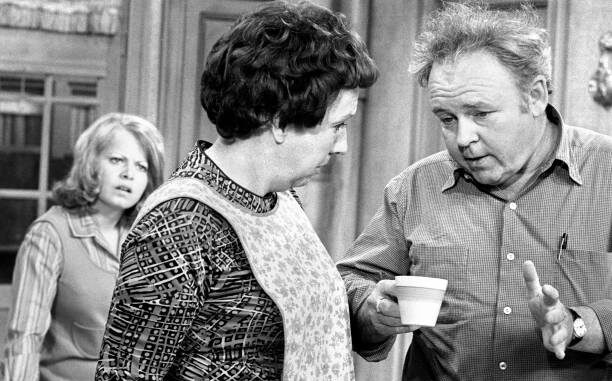
Introduction: A Different Era of Television
Fifty years ago, the landscape of American television was vastly different, dominated by just three major networks and stringent regulations. The Federal Communications Commission (FCC) wielded considerable power over content, particularly concerning family-friendly programming. This article explores how All in the Family, a groundbreaking sitcom, found itself at the center of a fierce battle over its time slot due to government regulations.
The FCC’s Concerns: Shaping Television Content
The Prime Time Access Rule
In the early 1970s, the FCC introduced several measures to curb the influence of the major networks. One significant regulation was the Prime Time Access Rule, which forced networks to relinquish certain time slots to local affiliates, aiming to encourage local programming. While this rule allowed for more diverse content, it also highlighted the FCC’s concern over the networks’ control of television.
The Rise of the Family Viewing Hour
As societal concerns about television content grew, particularly regarding violence and inappropriate material, the FCC initiated the Family Viewing Hour in the mid-1970s. This rule mandated that from 8 PM to 9 PM, only family-friendly content could air, effectively limiting the type of programming that could be broadcast during this critical time.
The Impact on All in the Family
A Shift in Time Slots
All in the Family, created by Norman Lear, was a revolutionary sitcom that addressed social issues through its portrayal of the Bunker family. Originally airing at 9:30 PM, it moved to 8 PM on Saturday nights in the 1971-72 season, where it quickly became a cultural phenomenon. However, the introduction of the Family Viewing Hour posed a significant challenge to the show’s continued success.
From Saturday Nights to Mondays
When the Family Viewing Hour was implemented, All in the Family was forced to move to a less favorable time slot—9 PM on Mondays. This shift not only altered the show’s reach but also limited its ability to engage with its audience effectively.
The Legal Battle: Fighting Back Against Regulations
Suing the FCC
In response to the Family Viewing Hour and its impact on the show, Lear and the cast of All in the Family took legal action. The Writers Guild, Directors Guild, and Screen Actors Guild joined forces, arguing that the FCC’s regulations violated First Amendment rights. Lear’s production company, Tandem Productions, also filed a lawsuit specifically targeting the forced time slot change.
A Victory for Free Speech
In November 1976, a judge ruled in favor of All in the Family, declaring the Family Viewing Hour unconstitutional. The court found that the FCC had exerted undue pressure on the networks, circumventing the public debate typically required for such regulatory changes. This landmark ruling highlighted the importance of creative freedom in television.
The Aftermath: Ratings and Legacy
Continued Success, but a Shift in Ratings
Although All in the Family won its legal battle, it never returned to its original time slot. The show maintained its status as a top-rated program for some time, but the change did affect its ratings over the long haul. After moving to Mondays, it continued to attract viewers but experienced a gradual decline as the series progressed.
Cultural Impact
Despite the challenges, All in the Family left a lasting legacy on television. The show paved the way for future sitcoms to address serious issues while maintaining humor, influencing countless programs in the years that followed. Its bold approach to storytelling and willingness to tackle controversial topics resonated with audiences and critics alike.
Conclusion: A Milestone in Television History
The battle over All in the Family’s time slot illustrates the tension between government regulation and creative expression in television. While the Family Viewing Hour sought to promote family-friendly content, it inadvertently sparked a legal fight that championed free speech in the arts. Today, the legacy of All in the Family continues to influence the landscape of television, reminding us of the importance of challenging norms and pushing boundaries in storytelling.
FAQs
1. What was the Family Viewing Hour?
The Family Viewing Hour was an FCC regulation that mandated only family-friendly content could air from 8 PM to 9 PM, limiting programming options for networks.
2. How did All in the Family respond to the time slot change?
All in the Family filed a lawsuit against the FCC, arguing that the regulation infringed on their First Amendment rights.
3. What was the outcome of the legal battle?
In November 1976, a judge ruled the Family Viewing Hour unconstitutional, allowing more creative freedom for television shows.
4. Did All in the Family return to its original time slot?
No, despite winning the lawsuit, All in the Family never returned to its original Saturday 8 PM time slot.
5. What legacy did All in the Family leave on television?
The show set a precedent for future sitcoms to address serious social issues while maintaining humor, influencing many programs in the years that followed.
